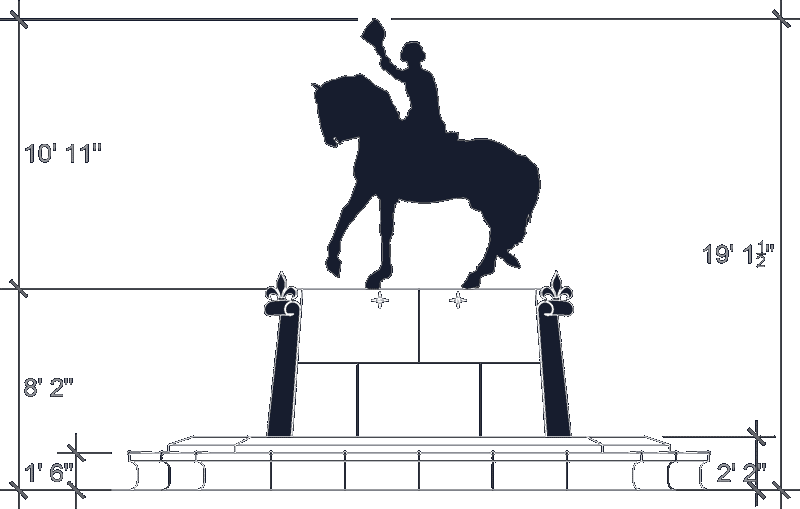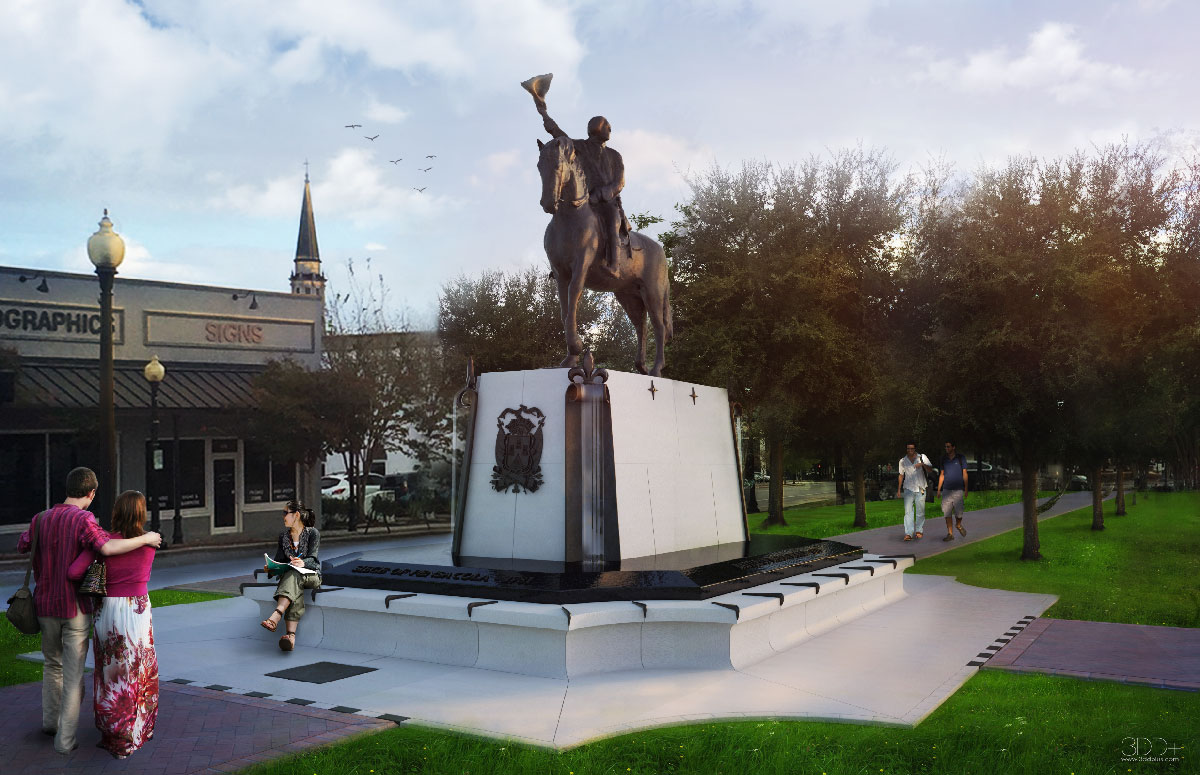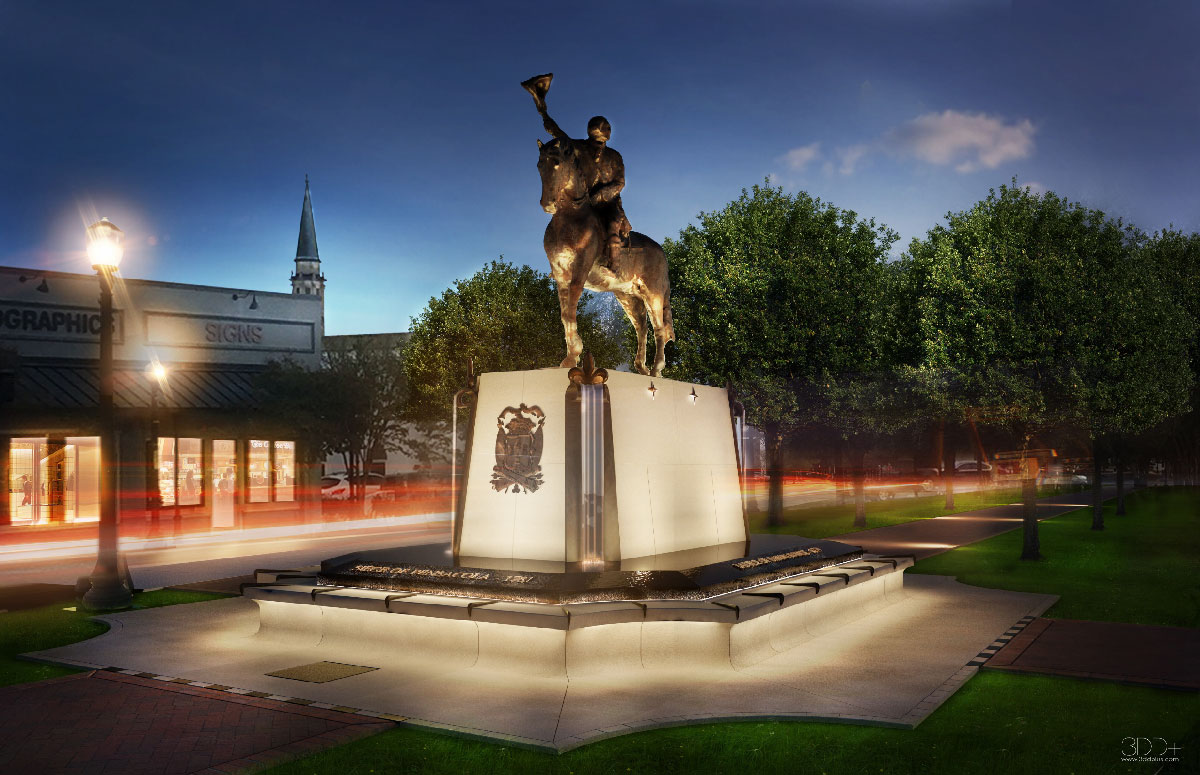A Monument befitting a Great Street

The Gálvez monument is located at the intersection of Palafox and Wright Streets. In 2013, Palafox was named one of America’s Great Streets by the American Planning Association.
Created by sculptors Bob Rasmussen and Kathryn R. Vincze, the monument includes a bronze statue of Gálvez astride his horse and facing the site of Fort George, his hat raised in victory. The statue sits atop a plinth of limestone featuring the Gálvez coat-of-arms cast in bronze. Around the plinth is a limestone bench surrounded by a perimeter of red roses representing the Spanish soldiers who died in the campaign.
The entire monument stands over nineteen feet tall — truly a grand entrance to downtown Pensacola.

